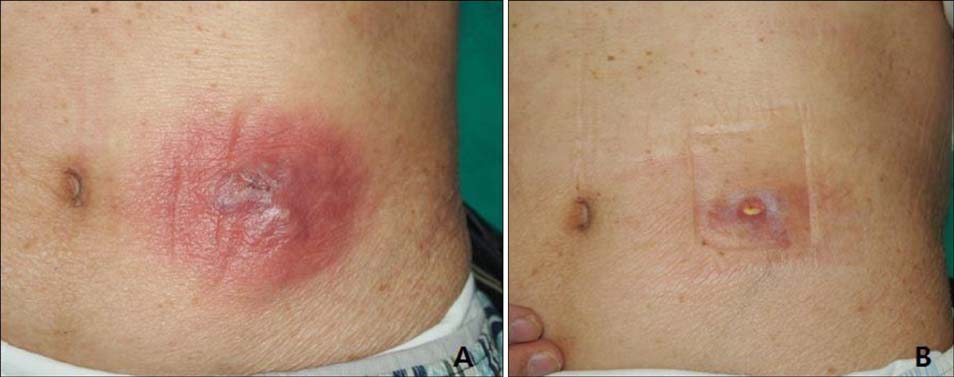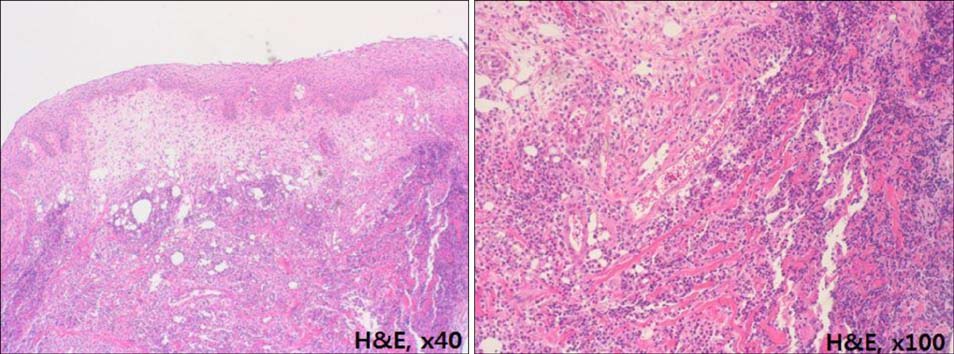Ann Dermatol.
2015 Aug;27(4):460-462. 10.5021/ad.2015.27.4.460.
A Case of Gonadotropin-Releasing Hormone Agonist-Induced Sterile Abscess Showing a Good Response to Systemic Steroid Therapy
- Affiliations
-
- 1Department of Dermatology, Korea University Ansan Hospital, Korea University College of Medicine, Ansan, Korea. skin4u@korea.ac.kr
- KMID: 2171511
- DOI: http://doi.org/10.5021/ad.2015.27.4.460
Abstract
- No abstract available.
Figure
Reference
-
1. Limonta P, Manea M. Gonadotropin-releasing hormone receptors as molecular therapeutic targets in prostate cancer: Current options and emerging strategies. Cancer Treat Rev. 2013; 39:647–663.
Article2. Choi S, Lee AK. Efficacy and safety of gonadotropin-releasing hormone agonists used in the treatment of prostate cancer. Drug Healthc Patient Saf. 2011; 3:107–119.
Article3. Gnanaraj J, Saif MW. Hypersensitivity vasculitis associated with leuprolide (Lupron). Cutan Ocul Toxicol. 2010; 29:224–227.
Article4. Neely EK, Hintz RL, Parker B, Bachrach LK, Cohen P, Olney R, et al. Two-year results of treatment with depot leuprolide acetate for central precocious puberty. J Pediatr. 1992; 121:634–640.
Article5. Kim JM, Shin YL. Sterile abscess formation associated with two different forms of gonadotropin-releasing hormone agonist in central precocious puberty. Ann Pediatr Endocrinol Metab. 2012; 17:184–188.
Article
- Full Text Links
- Actions
-
Cited
- CITED
-
- Close
- Share
- Similar articles
-
- Sterile Abscess Formation Associated with Two Different Forms of Gonadotropin-Releasing Hormone Agonist in Central Precocious Puberty
- Thyroid Dysfunction Associated with Administration of the Long-Acting Gonadotropin-Releasing Hormone Agonist
- Indication of Gonadotropin-Releasing Hormone Agonist: Precocious Puberty or Advanced Puberty?
- The effective of ultrashort-term gonadotropin-releasing hormone agonist administration in controlled ovarian hyperstimulation for in vitro fertilization
- Response of Human Chorionic Gonadotropin to 6-D-Trp-Gonadotropin-Releasing Hormone and Gonadotropin-Releasing Hormone Stimulation in the Culture Media of Normal Human Placenta of Different Gestational Ages



